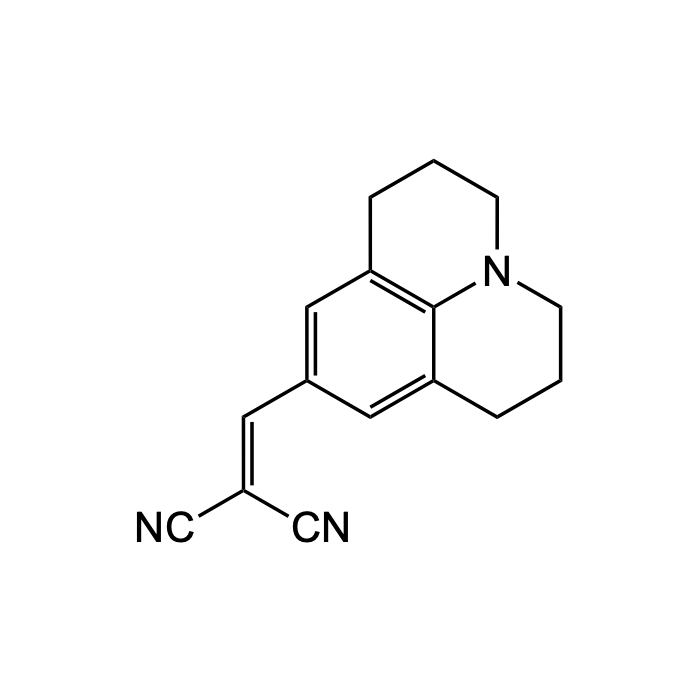Cookie Policy: This site uses cookies to improve your experience. You can find out more about our use of cookies in our Privacy Policy. By continuing to browse this site you agree to our use of cookies.
Chemodex
4-Dicyanovinyljulolidine

| Product Details | |
|---|---|
| Synonyms | 4-Dicyanovinyljulolidine; 9-Julolidinylmethylenmalononitril |
| Product Type | Chemical |
| Properties | |
| Formula | C16H15N3 |
| MW | 249.31 |
| CAS | 58293-56-4 |
| Source/Host Chemicals | Synthetic |
| Purity Chemicals | ≥97% (HPLC) |
| Appearance | Orange to very dark red powder. |
| Solubility | Soluble in DMSO (20mg/ml) or chloroform. |
| Identity | Determined by 1H-NMR. |
| Declaration | Manufactured by Chemodex. |
| Other Product Data |
Click here for Original Manufacturer Product Datasheet |
| InChi Key | LROAUBRDKLVBCP-UHFFFAOYSA-N |
| Smiles | N#C\C(=C/c1cc2CCCN3CCCc(c1)c23)C#N |
| Shipping and Handling | |
| Shipping | AMBIENT |
| Short Term Storage | +4°C |
| Long Term Storage | -20°C |
| Handling Advice | Protect from light and moisture. |
| Use/Stability | Stable for at least 2 years after receipt when stored at -20°C. |
| Documents | |
| Product Specification Sheet | |
| Datasheet |
 Download PDF Download PDF |
DCVJ is a fluorogenic dye that is considered a fluorescent molecular rotor because its properties depend on the rotational relaxation of the molecule, which can be influenced by the viscosity of the solvent used (quantum yield increases by decreasing free rotation). It has an excitation maximum at approximately 450 nm, and its emission is approximately 480 or 505 nm for low or high viscosity solvents, respectively. DCVJ has been used to study tubulin dynamics, it binds to tubulin and actin, and increases its fluorescence intensity drastically upon polymerization. DCVJ also binds to phospholipid bilayers, it integrates into the cell membrane and changes its quantum yield with the viscosity of the environment.
(1) C.E. Kung & J.K. Reed; Biochem. 28, 6678 (1989) | (2) A. Bhattacharyya, et al.; Indian J. Biochem. Biophys. 32, 442 (1995) | (3) M.A. Haidekker, et al.; Am. J. Physiol. Heart Circ. Physiol. 278, H1401 (2000) | (4) J.A. Levitt, et al.; Chemphyschem 12, 662 (2011)





